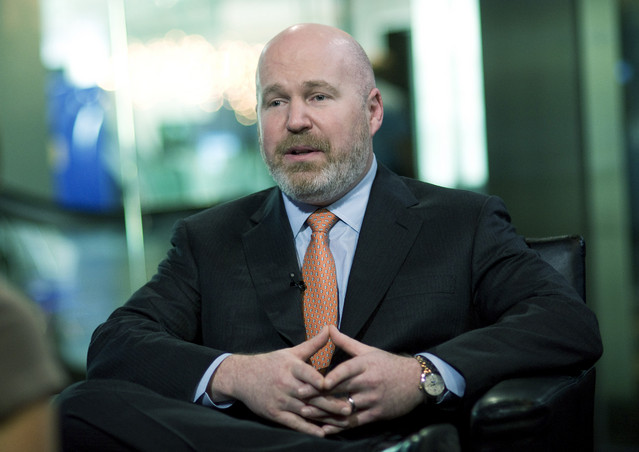by Clifford Asness, Ph. D. AQR Capital Management, Inc.
There is a recent post by Eric Nelson that uses AQR to make one really good point and then to, kind of oddly, pointedly not ask the next logical question. Here I ask and answer that question.
Eric reminds us that what the average investor in a fund gets is different from the return of that fund. That’s true and important. If they get in and out with poor timing they can sabotage themselves. Next, his thesis is that investors in “alternative” funds, funds meant to be diversifying to traditional investments and often using more hedged strategies, are worse timers. He uses Dimensional Fund Advisors (DFA) as the example of traditional investing 1 and us (AQR, in case you’ve forgotten!) as the example of alternative investing. It’s nice to be an icon I guess… But, then it all goes south for us in Eric’s piece. He shows that investors hurt themselves in the example alternative funds (by getting in/out at the wrong times and thus having their aggregate dollar weighted experience underperform the actual fund) but not in the traditional funds.
Well, so far we don’t really disagree. His calculations seem about right 2 , and we spend a lot of time ourselves trying to talk people out of too much timing. We don’t particularly like it for styles, for markets, and we really hate it when it’s done at what we call momentum investing at a value time horizon (peeve #3). So, we probably agree with anyone advising investors to time less, particularly if it’s to avoid timing like a medium- to long-term return chaser, and even more particularly when it’s about timing us!
So, what’s the problem? Well, the problem is Eric stops there. He somehow stifles the curiosity we know he must have but doesn’t ask “so, what if someone didn’t time these funds?” Presumably that’s something that should interest a long-term, strategic buy-and-hold investor like Eric! I mean he had to have all the data loaded and ready to go. It just seems like a really obvious next question. Well, I won’t leave you hanging, I’m going to ask and answer it here.
Let me first say that, obviously, three years of monthly data 3 are not close to enough to draw any serious conclusions. 4 Nor is the particular set of funds that Eric chose (and I will stick with them just to avoid any possibility of cherry picking) necessarily the exact set of funds that AQR, DFA, or Eric would literally recommend for an overall asset allocation. But, come on, once you’re picking on these funds you’ve got to look at how they actually performed, and not just at whether investors helped or hurt themselves with their timing, don’t you?
I will start out using just equal weighted averages of the funds selected by Eric as the AQR and DFA composites. Again, that’s also not what anyone would necessarily recommend (not these particular funds nor equal weighing). 5 But I’m trying to work with Eric’s choices here in as neutral a way as possible.
Looking at it this way the annualized average return on the DFA composite was 3.9% (the 50% in two USA funds were much stronger than the 50% in international and emerging) with a realized volatility of 11.5% and a worst drawdown of -15.5%. Its Sharpe ratio came in at 0.33. Doing the same exercise with the AQR composite you get an annualized average return of 3.2% (darn, we lose by 70 bps!), a realized volatility of only 3.5%, a worst drawdown of only -1.7%, and a Sharpe ratio near triple that of the traditional composite at 0.90. 6
Let’s have more fun (and be a bit more realistic). Imagine you put ½ your money into the DFA composite and ½ into the AQR composite, again equally weighting within both. Now you get a 0.55 Sharpe (vs. 0.33 for only traditional) with a -7.1% worst drawdown (vs. -15.5% for only traditional). Of course, you get just about the same return (as the DFA and AQR composites were only 70 bps apart). 7 I’d sign up for that improvement over 100% traditional every time. 8 It happened because the AQR composite kept up in return, was actually much lower volatility, and only 0.25 correlated with the DFA composite. Of course, delivering those characteristics is much of the point of alternatives.
Short periods shouldn’t be used for too much in finance (sorry to remind everyone as we drone on about this again, but three years only feels like a long time — it’s really a very short period). But, what’s really odd is to use a short period with great confidence for one thing while completely ignoring it for another. What’s even odder is to recommend against something based on average suboptimal behavior that anyone individually can control themselves. For instance, if the DFA funds investors exhibited suboptimal timing behavior (they don’t over this period) would Eric abandon them because of the behavior of others? Now, if he wants to rewrite his piece with a new theme of “too many investors jump in and out of alternatives too much; what they should do is find ones they believe in, add them to a traditional portfolio and then stick to it” we’d all be in harmony. Instead, he says “investors time these good things poorly so you should just avoid them” and not simply “stop timing these good 9 things poorly.” We just think that’s kind of weird!
I’ll end with the title question. Eric, presumably, again, you wouldn’t get in and out capriciously like you document for others. Given that, and given the three years of data you’re drawing your own conclusions from, how much should we pencil you in for? :)
This post was originally published at AQR Capital
Copyright © AQR Capital
















